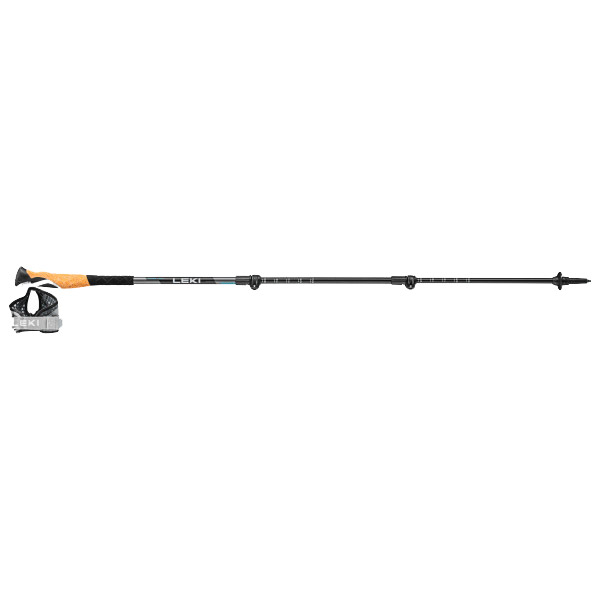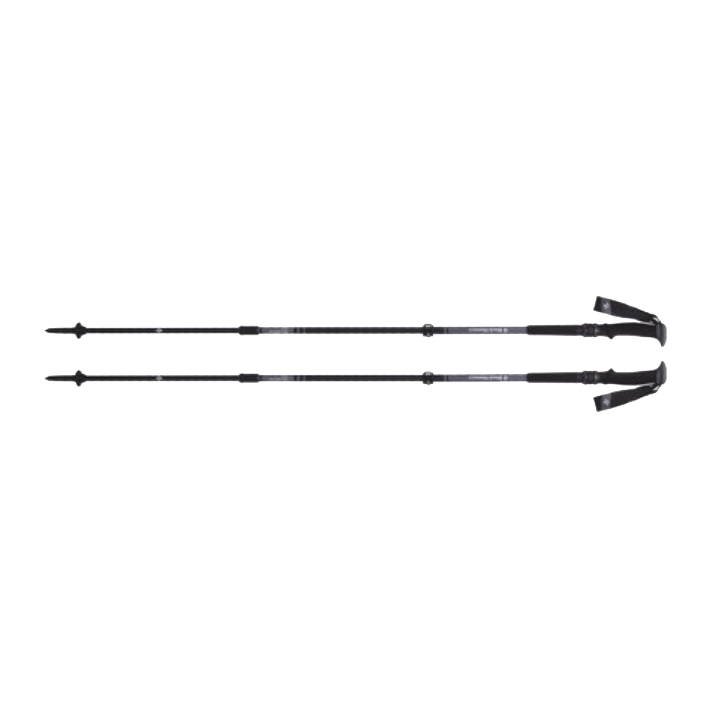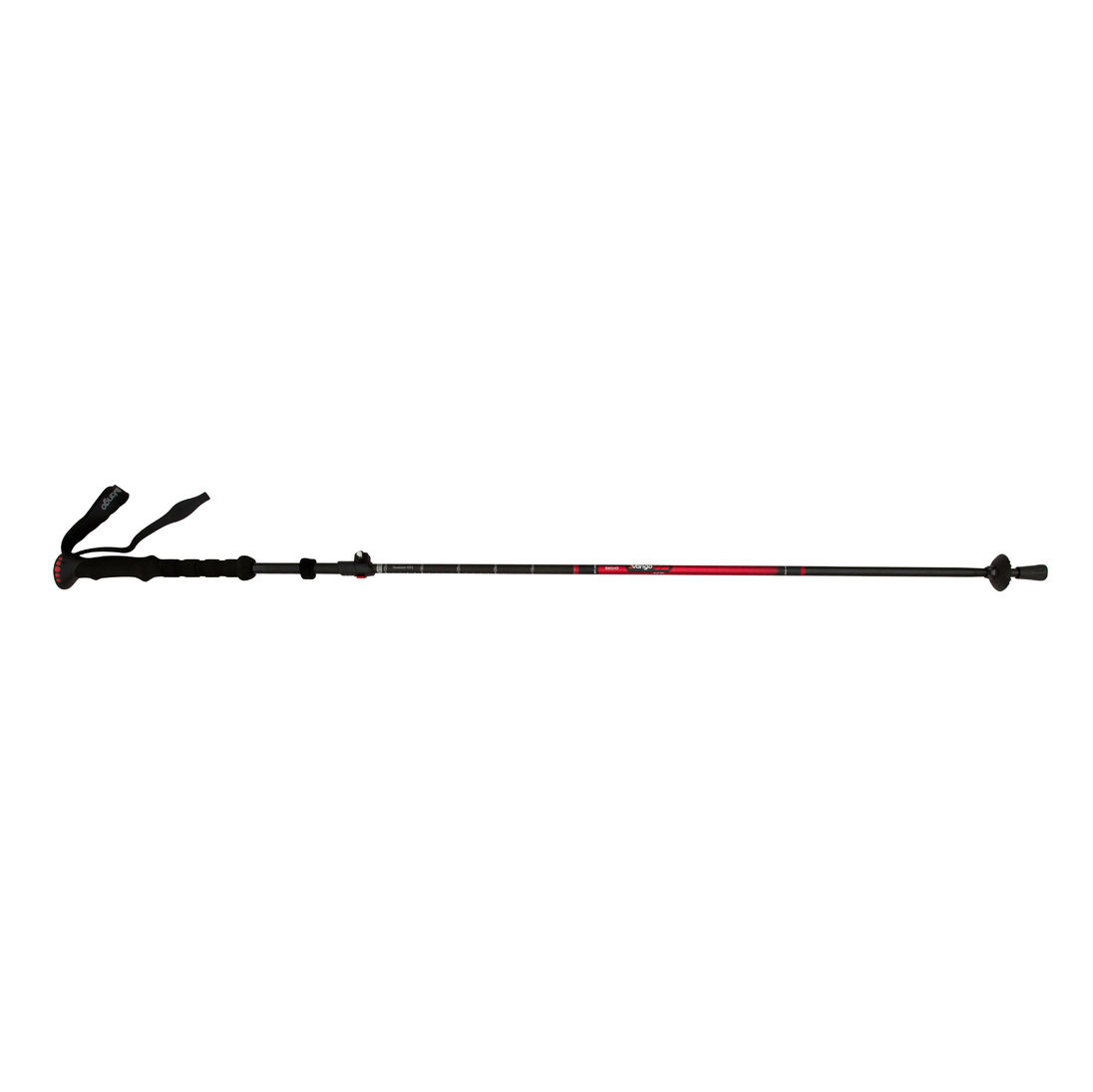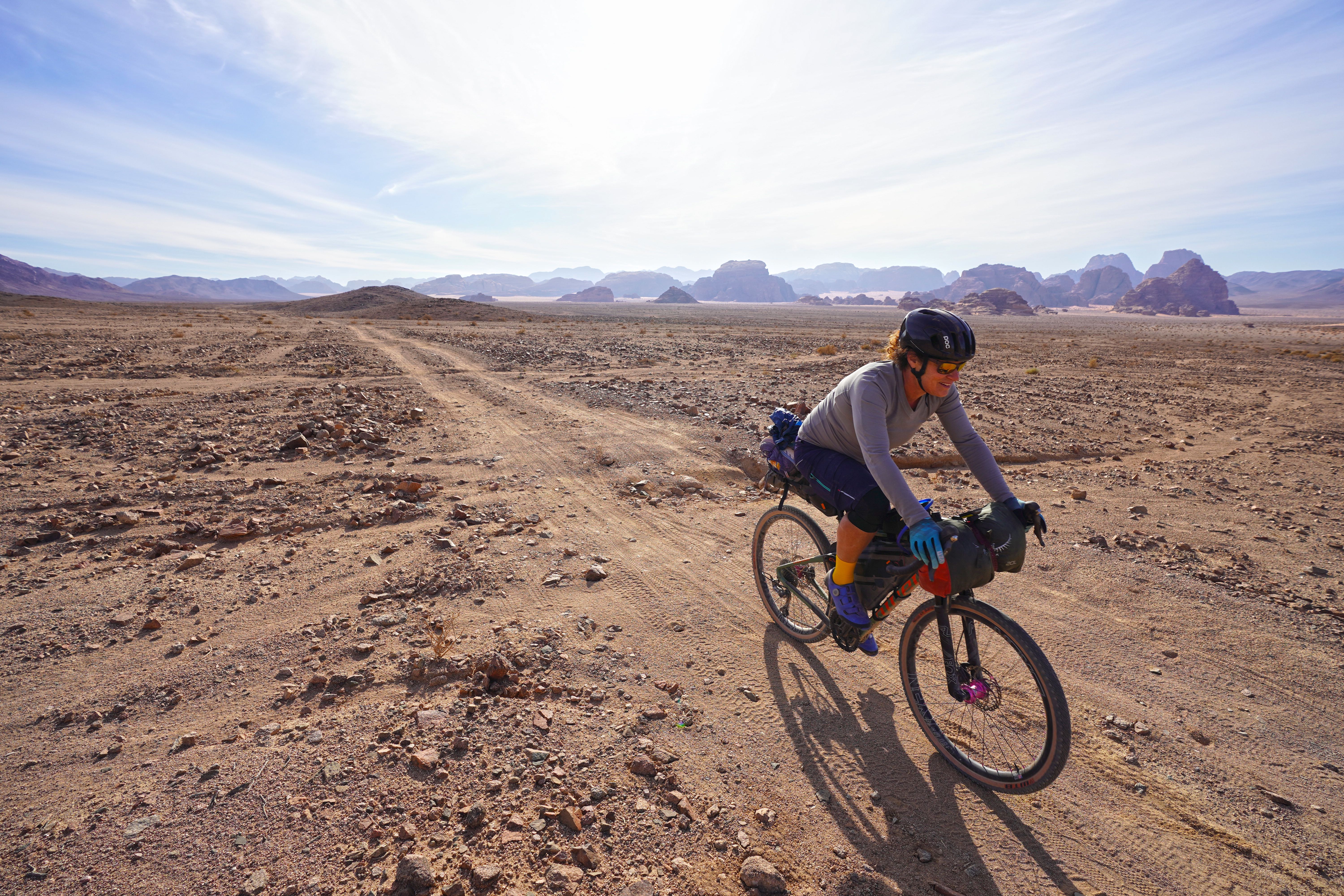The best trekking poles: take the pressure off when you're out on the trails
We've tested the best trekking poles to help you pick the right pair to add balance, stability and speed to your stride on every adventure
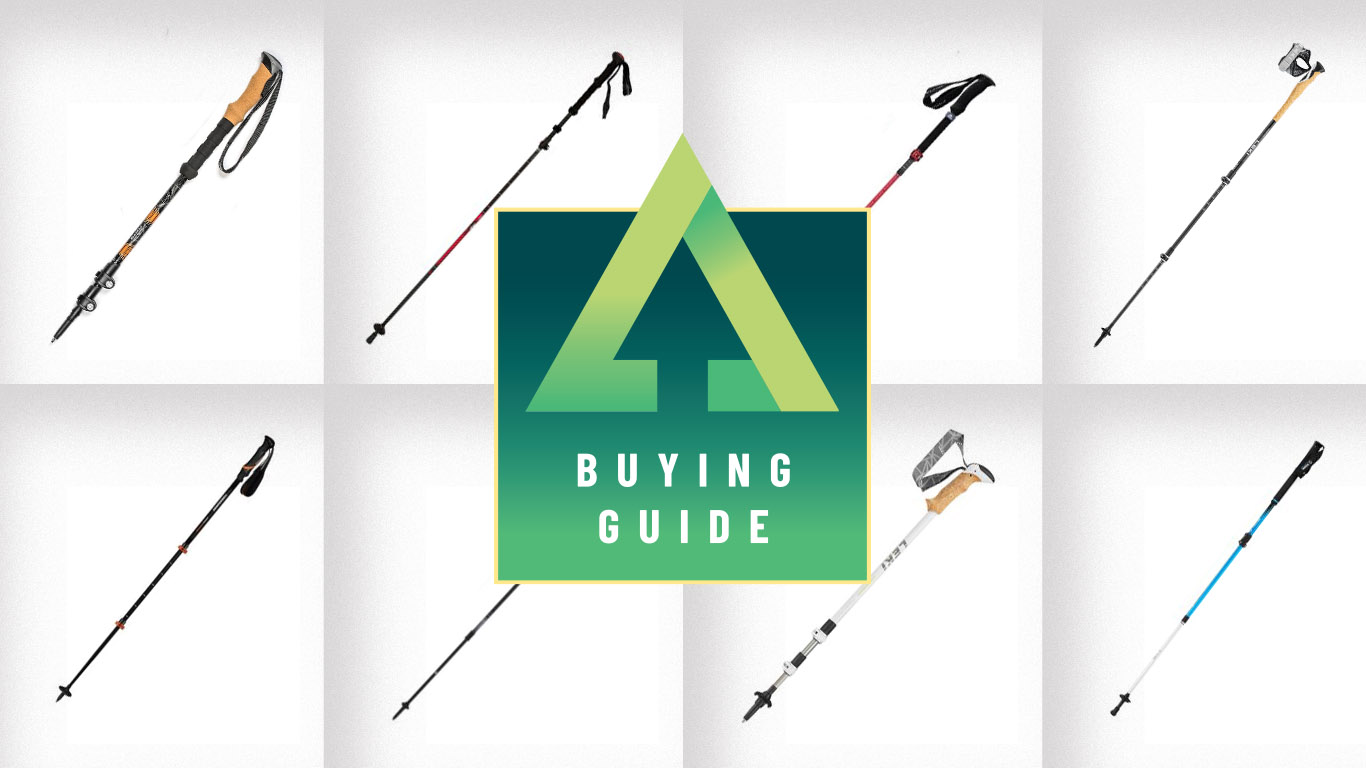
The best trekking poles can make all the difference when you're longing for a fun day or two in the backcountry. Taking some of the strain away from your ankles, knees and hips means you'll be able to walk or run faster and for longer too, opening up a new world of possibilities.
And don't assume they're only for people out for strenuous multi-day hikes on technical terrain. The best trekking poles have their place whether you're a day hiker, a long-distance trekker or a trail runner. With a quality pole in each hand and by planting them into the ground as you walk, you take substantial weight off your legs, softening each impact as you go. They're also useful tools for river crossings.
A modern trekking pole's shaft is comprised of numerous sections that make them easy to stow away when not in use. Typically, they're usually telescopic – the shaft slides away into itself – or collapsible, poles that fold away rather like tent poles.
Lovers of rigid, Gandalf-style staffs take heed. Firstly, the best trekking poles should always be used in pairs so that the load on your body is balanced. Also, being able to adjust the length of your poles is crucial, not just because we're all a different height but also because it's also useful depending on whether you're ascending or descending. As a rule, your pole should strike the ground with your elbow at a right angle for maximum efficiency.
Typically, the best trekking poles feature either an aluminum or carbon fiber shaft. Aluminum has the advantage of durability, while carbon poles are generally lighter – ideally suited to fastpackers and those setting out in trail running shoes. In essence, the best trekking poles for you will depend on your planned adventures.
We rate the Leki Cross Trail Lite Carbon, which we'd turn to time and time again on test, as the best trekking pole thanks to its lightweight versatility.
Meet the experts
You can trust Advnture
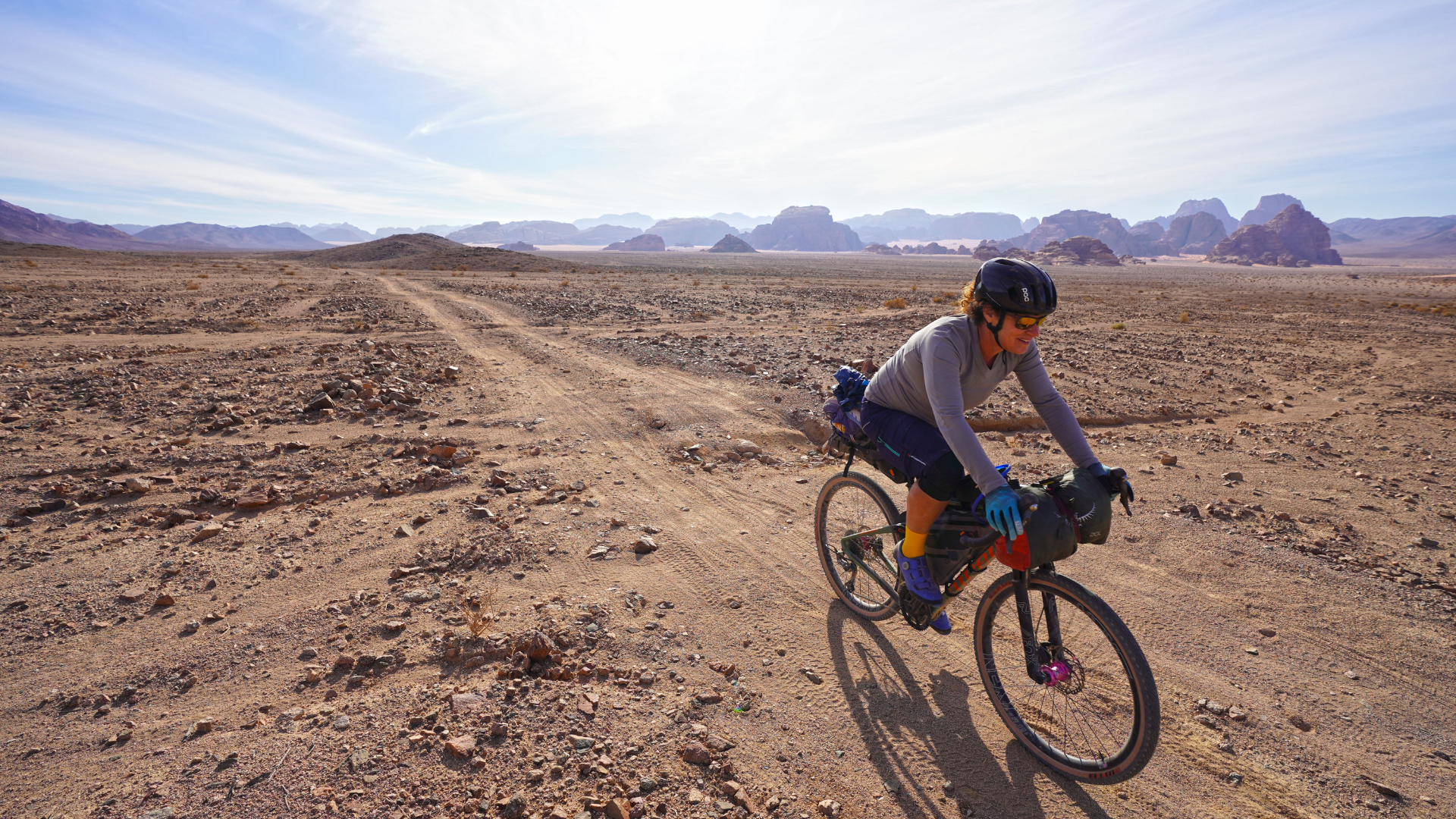
Vermont-based writer, photographer and adventurer, Berne reports on hiking, biking, skiing, overlanding, travel, climbing and kayaking for category-leading publications in the U.S., Europe and beyond. In the field, she’s been asked to deliver a herd of llamas to a Bolivian mountaintop corral, had first fat-biking descents in Alaska, helped establish East Greenland’s first sport climbing and biked the length of Jordan. She’s worked to help brands clean up their materials and manufacturing, and has had guns pulled on her in at least three continents.
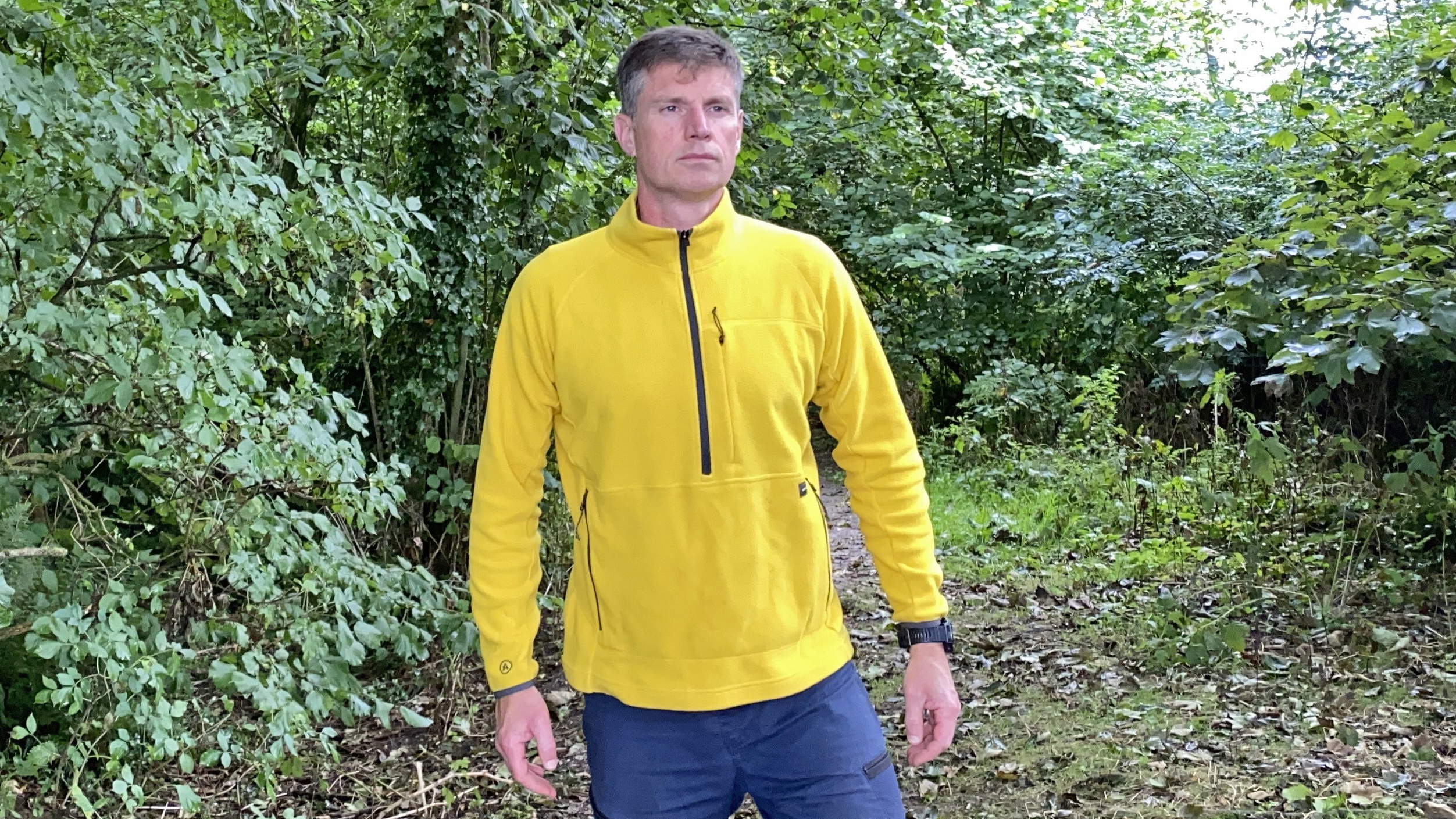
Author of Caving, Canyoning, Coasteering…, a recently released book about all kinds of outdoor adventures around Britain, Pat has spent 20 years pursuing stories involving boots, bikes, boats, beers and bruises. En route he’s canoed Canada’s Yukon River, climbed Mont Blanc and Kilimanjaro, skied and mountain biked through the Norwegian Alps, run an ultra across the roof of Mauritius, and set short-lived records for trail-running Australia’s highest peaks and New Zealand’s Great Walks. Follow Pat’s escapades on Strava here and instagram here.
The quick list
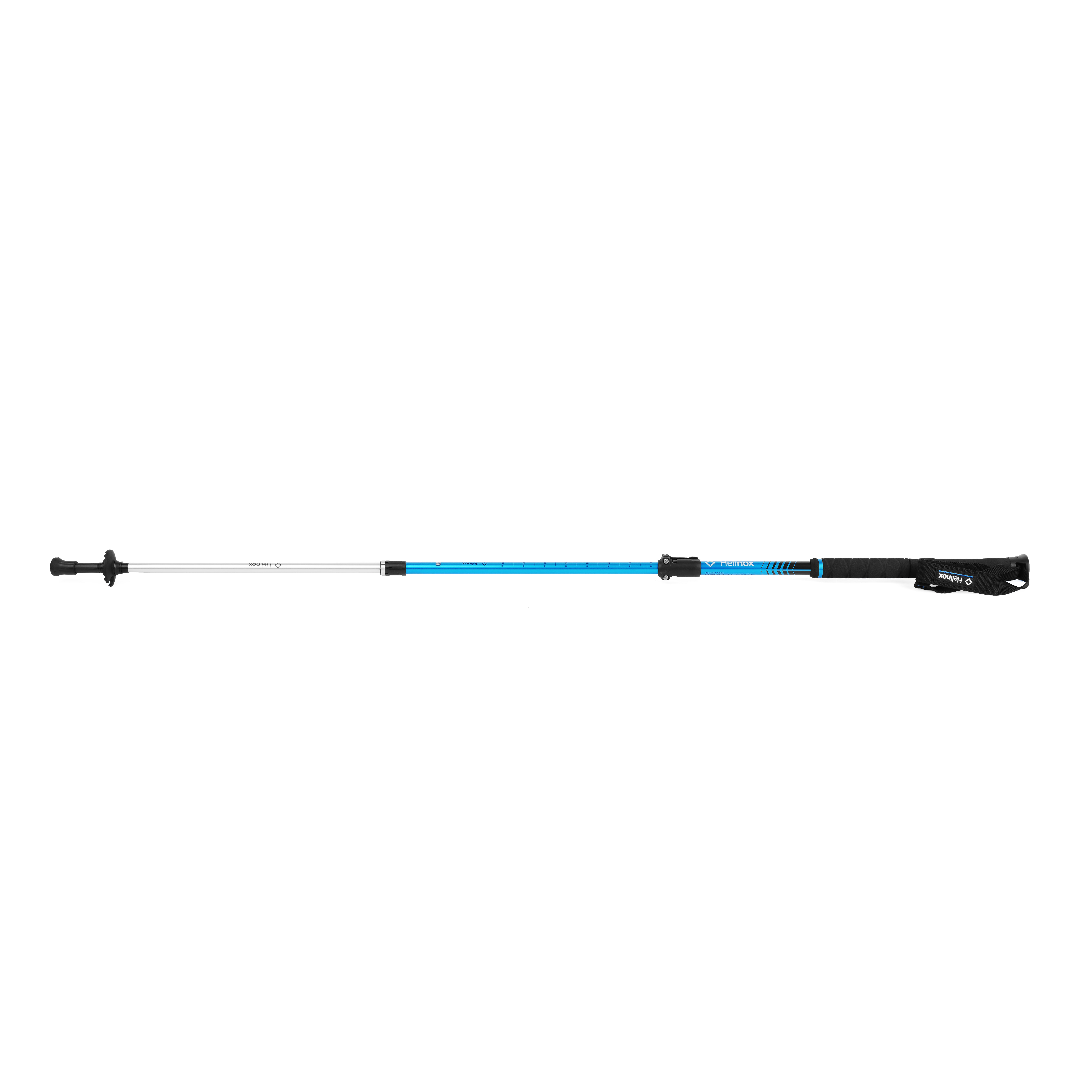
The best lightweight poles for portability
These poles are a four-piece design, which means they collapse down much smaller than most telescopic poles. We were impressed by how they are assembled - the sections are held in place by pop out buttons, with a single lever to then lock the pole securely in place
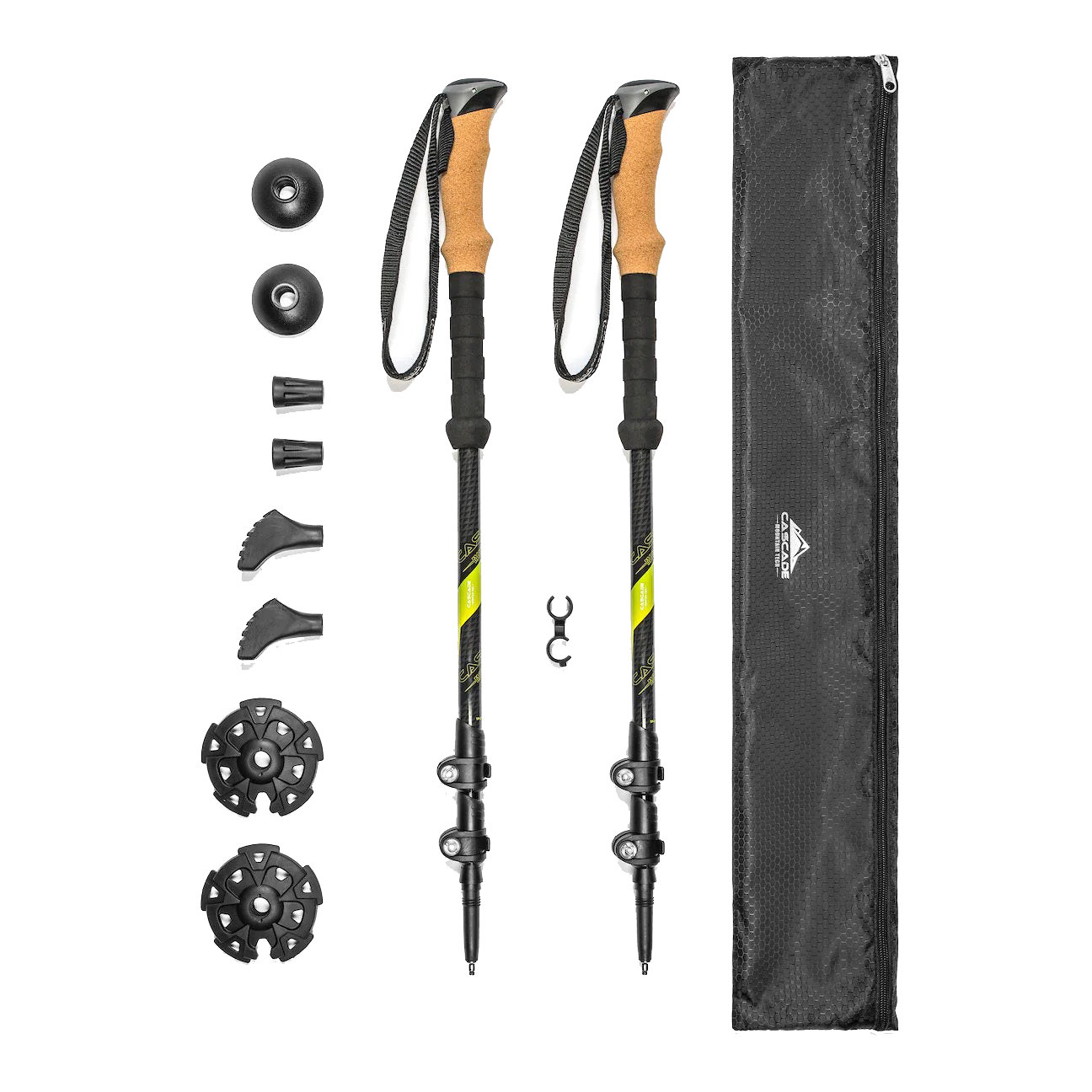
The best for day hikes
With a relatively long packed length, and weighing in on the heavy side, we think these are more suited to day hikes than thru-hiking or backpacking. But we found the cork grips comfortable, and it's worth noting that these poles are a much lower price than similar carbon shaft designs
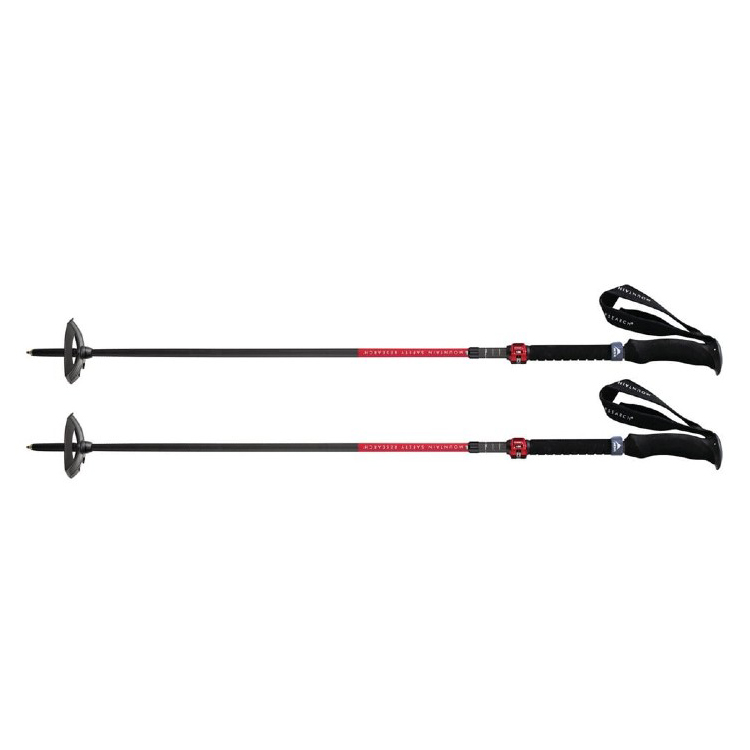
The best for winter mountaineering
These high spec poles are built from kevlar-reinforced carbon fiber and are suitable for mountainside exploration, including on snow and ice. We liked the padded lower grip, that allows you to use these on hilly descents without have to adjust them first
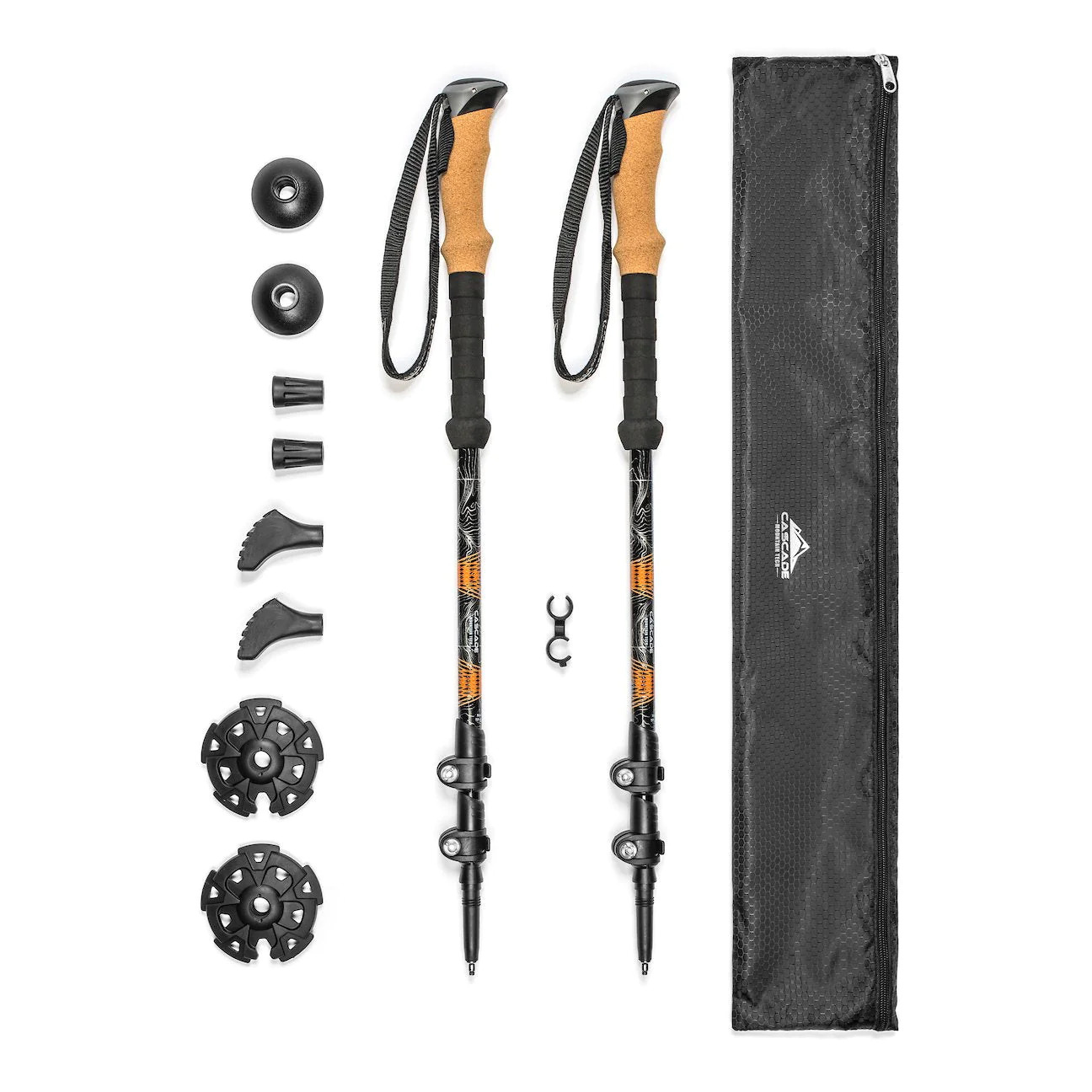
The best heavier poles
We reckon these are the best trekking poles you can buy for the price, and will do the job for all four seasons. Although they come with a one year warranty, each section is also replacement if it gets damaged or worn, so you should get years of use out of them
Load the next 4 products ↴
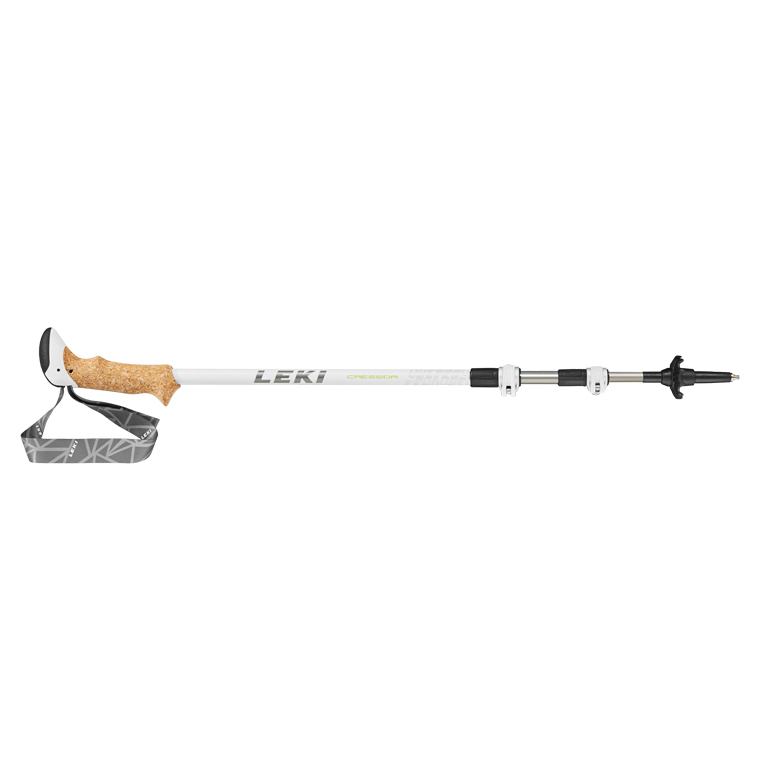
The best for women
With compact grips especially designed for smaller hands, we think these are an ideal choice for female hikers or younger people. The handles are a mix of 80% cork - so they shouldn't get too cold, and 20% latex for extra strength. Lexi's aluminum shafts are also guaranteed for life against breakage
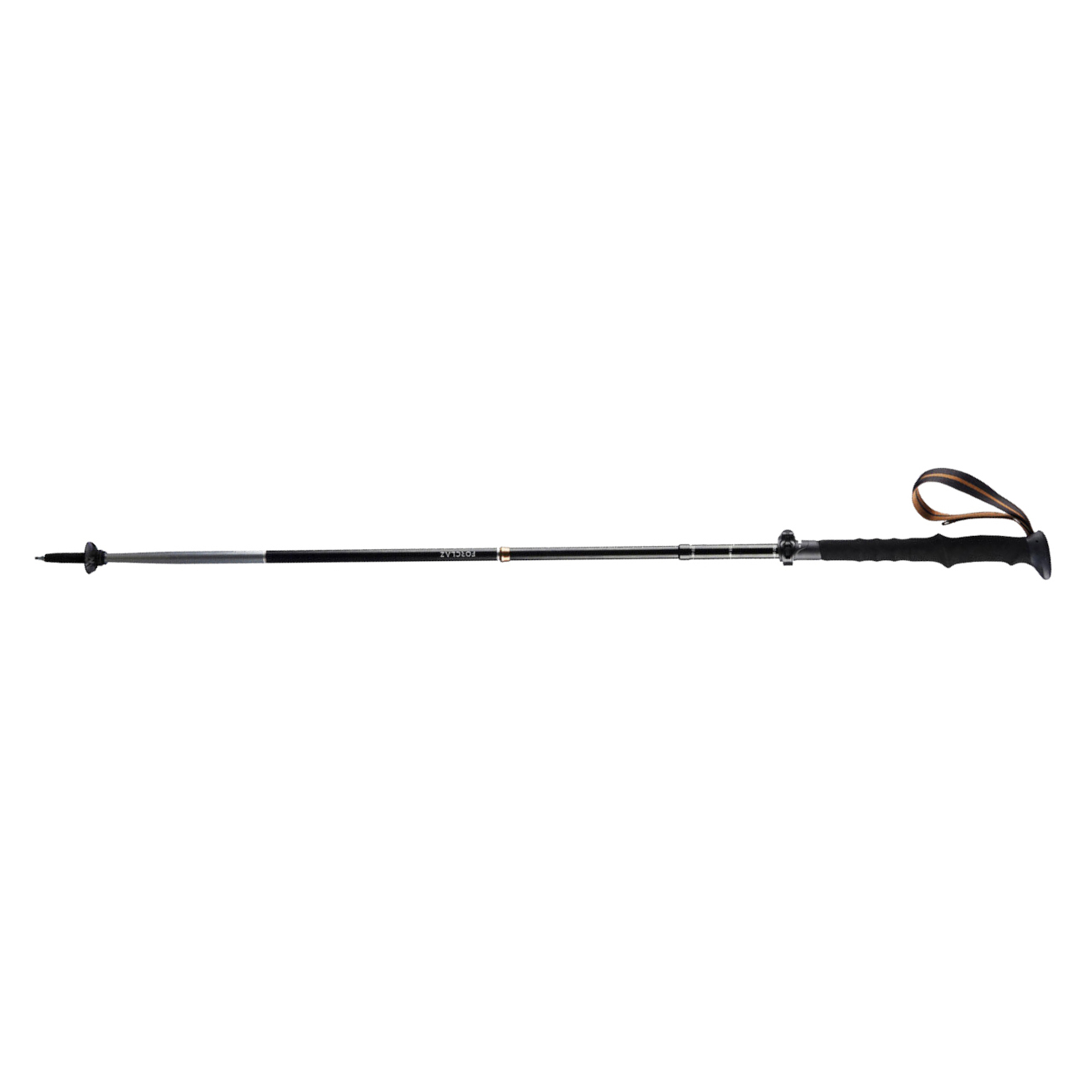
The best value
We think these are a great budget option for people who want to give trekking poles a go for the first time. They're not the lightest poles around but they measure up well to the competition. with a wide, comfortable wrist strap, shaped foam handgrip and beefy tungsten tip
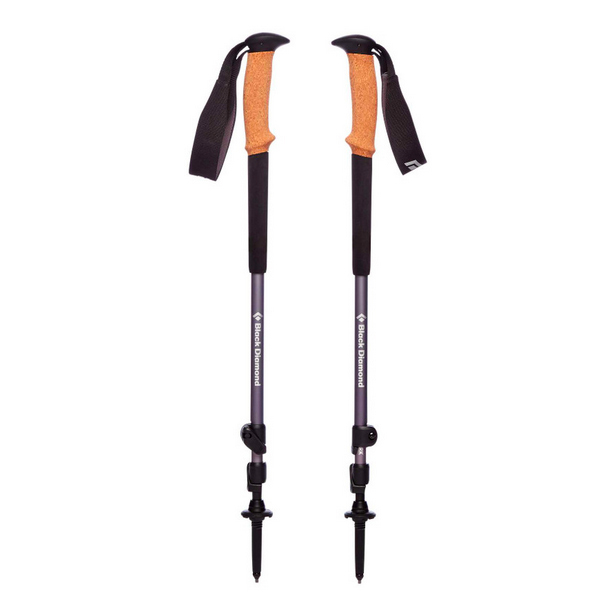
The best for warmer weather
These are great for warmer weather, as the ergonomic cork handgrips will be far less sweaty than foam with bare hands. However, we'd say these are true four-season poles that will excel across in a range of conditions, thanks to the interchangeable baskets and tips
The best lightweight poles
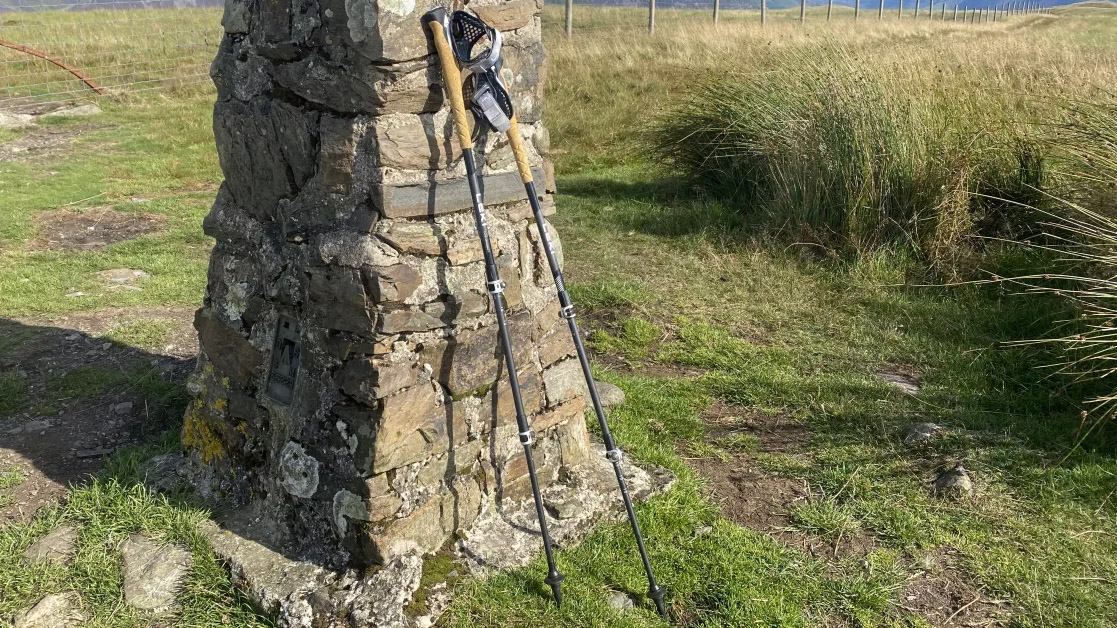
Specifications
Reasons to buy
Reasons to avoid
This excellent product from trekking pole aficionados Leki are on the lighter side of the pole spectrum. They’re not as light as some dedicated running poles, though they're definitely less weighty than a lot of hiking models, placing them somewhere between. This makes them suitable for both walking and running.
One look at the grip confirms this impression, with an ergonomic faux cork foam handle along with the kind of breathable mesh, glove-style strap typically seen on running poles. Their low gram count comes thanks to a carbon shaft rather than the aluminum found in many premium hiking pairs. The Cross Trails are telescopic – their three segments slide into each other, rather than folding up like a collapsible model. The sections are locked into place using Leki’s Speedlock 2 plus clamps.
If going fast and light is your thing, Leki’s telescopic Cross Trail Lite Carbon poles are just the ticket, with features to please both summit bagging hikers and ridge-hopping skyrunners.
Read our full Leki Cross Trail Lite Carbon trekking poles review
The best lightweight poles for portability
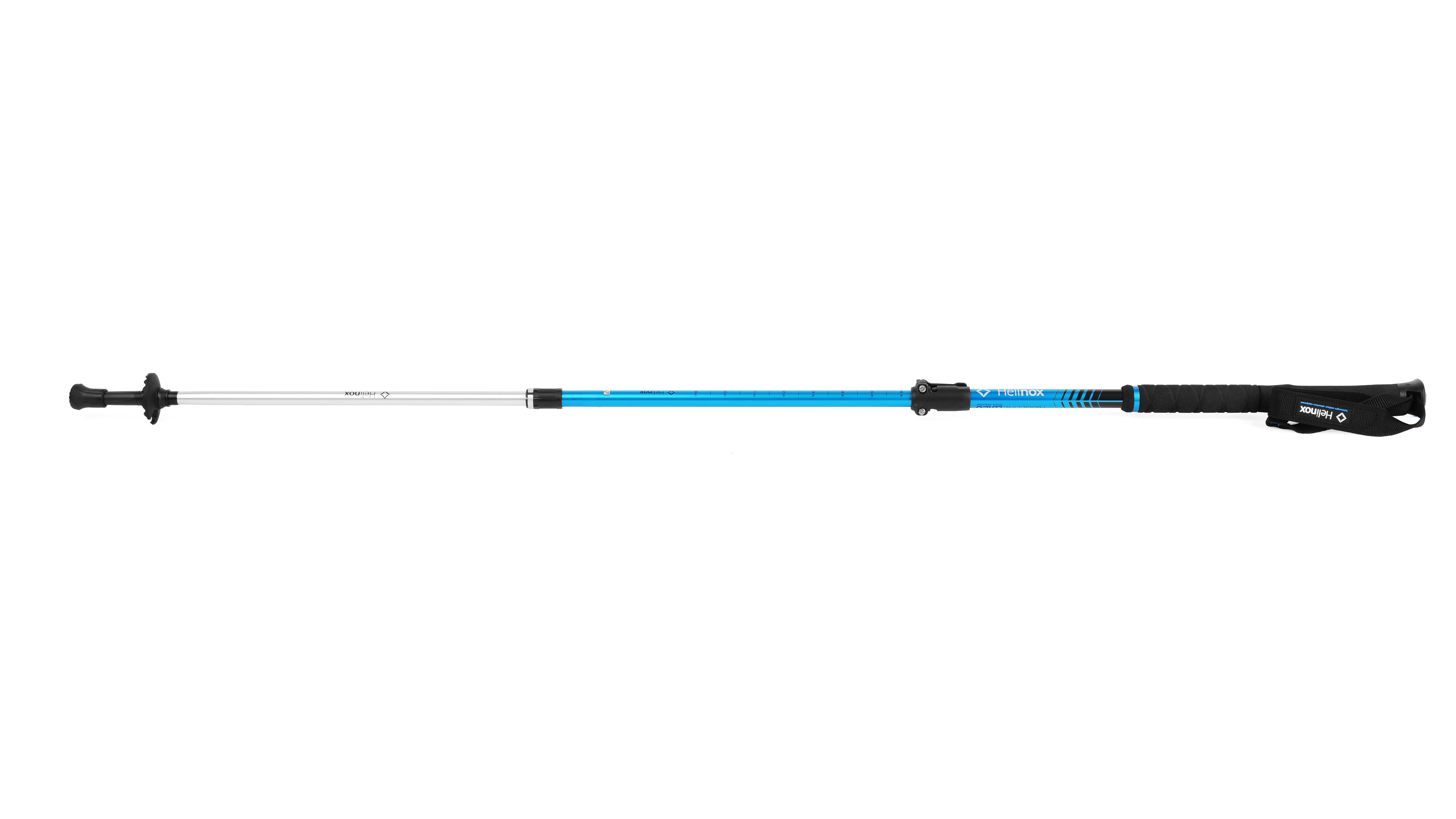
2. Helinox Ridgeline
Our expert review:
Specifications
Reasons to buy
Reasons to avoid
If you’re looking for a pair of poles capable of performing on any sort of terrain, which won’t take up too much space in your pack, the Ridgelines are well worth running your eyes over. Made to a four-piece design, they collapse down much smaller than most telescopic poles, which makes a big difference when you’re transporting them. Sections are thicker than most telescopic poles too, and the extra girth – combined with the quality of the DAC aluminum alloy used in their construction – gives them much more strength.
The tough tungsten-carbide tips have a pointy profile, allowing for precision placement on technical trail. And we were really impressed with the assembly method, whereby each section slots into place and is held in position by pop-out buttons, with a single lever tightening and securely locking the whole pole in place. Once that’s all done, you can adjust the height from the top section. The shaped top grip feels good and comfortable in the hand, and there is a lower grip area (albeit a small one). They’re pretty pricey, but other grumbles are minor, and include the fact that the wrist strap isn’t overly comfortable. Available in four lengths/versions, Ridgeline poles come with rubber tip covers for use on hard surfaces, and they are covered by a 5-year warranty.
The best for comfort
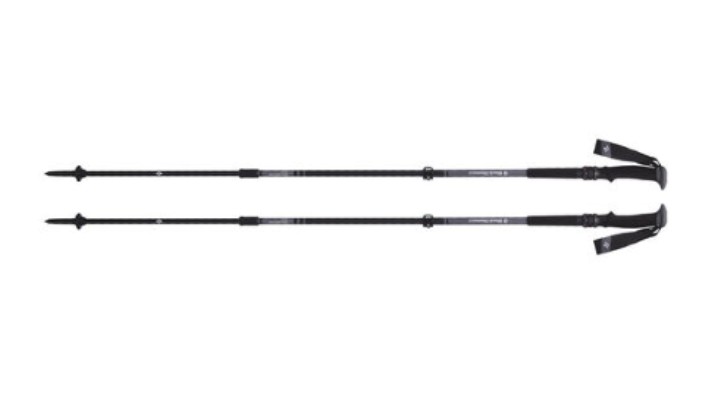
3. Black Diamond Trail Pro Shock
Our expert review:
Specifications
Reasons to buy
Reasons to avoid
Trekking poles are excellent for transferring weight and stress away from knees and ankles, but that does mean wrists and elbows take up extra strain. For trekkers taking on longer distances over hard rocky terrain, while carrying a full pack, and people prone to joint soreness, this be problematic - and shock absorbing technology can help. Black Diamond aren’t the only brand to offer extra bounce their poles, but their proprietary progressive four-stage control-shock technology is superb. Located in the dual-density grip, it dampens the impact of repeated pole strike on tough terrain, and has a smooth rebound action. The padded wrist strap adds an extra level of comfort. These top-end telescopic poles also feature BD’s superb FlickLock Pro locking system, which allow for easy adjustability combined with a rock solid clamp. These four-season poles are made with aluminum, making them more robust (but heavier) than carbon models, and come with interchangeable carbide tips (rubber tips available separately) and low-profile trekking baskets. Also available in female-specific model.
The best for day hikes
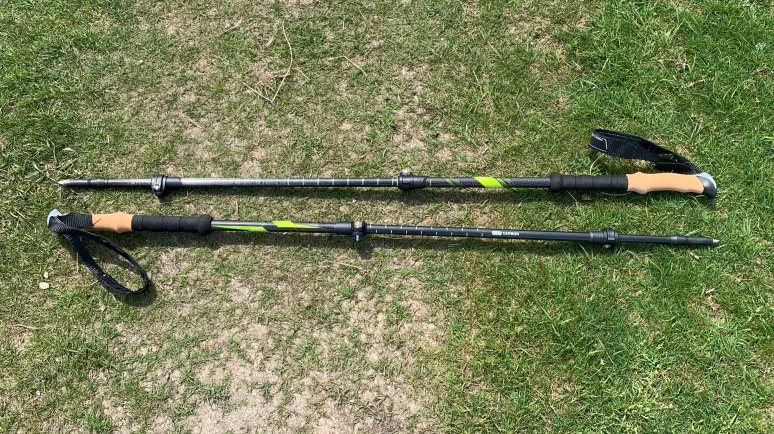
Specifications
Reasons to buy
Reasons to avoid
For those looking for an easy-to-use pair of trekking poles that are well-built for day hikes, these three-section poles offer a carbon shaft design at a much lower price than similar poles. These telescopic poles extend to 54” and collapse down to 26” when you want to pack them away. We found the comfortable cork grips were easy to use and, though they rubbed a little at first, they gradually molded to our tester's hands.
They arrive in a handy carrying case, useful for transporting them in the car or packing them away at home, and four different additional tips and baskets for seasonal use including mud and snow. These poles are relatively heavy and their packed length is on the long side, plus the locking mechanisms are a little bulky, so we prefer these for day hikes rather than thru-hiking or backpacking. They have no anti-shock feature, so on some surfaces they vibrate a little in the hand. However, for the price, you get a reliable pair of poles to save your knees on the downhills.
Read our full Cascade Mountain Tech Carbon Fiber Quick Lock Trekking Poles Cork Grip review
The best for winter mountaineering
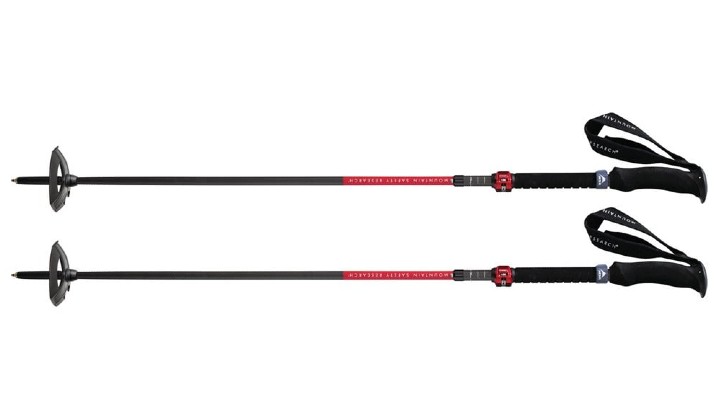
5. MSR Carbon Ascent
Our expert review:
Specifications
Reasons to buy
Reasons to avoid
A Z-folding three-piece trekking pole constructed from kevlar-reinforced carbon fibre, MSR’s Ascent Poles are specced up to level that makes them suitable for mountainside exploration and snow and ice activities, as well as being comfortably at home on hillsides and lower trails. The quick-deploy connection means the poles can be assembled in a single second.
MSR’s Dynalock system gives you 20cm to play with, in terms of quick and easy adjustment, with a very reliable and secure lock-off. There are two sizes to choose from; large (120-140cm) and small (100-120cm). On test, we found that both pack down to a delightfully diminutive size, and neither added much weight to our kit bag. Complimented by an easily adjustable strap, the handle of the poles is impressively padded with EVA, and there’s a lower grip (also padded) on each pole too, ideal for hill work when you don’t want to stop and adjust the length. The poles have a carbide tip offering great grip in all conditions and the snow baskets feature a unique MSR televator offering extra stability and confidence. They also come with a summer basket.
The best heavier poles
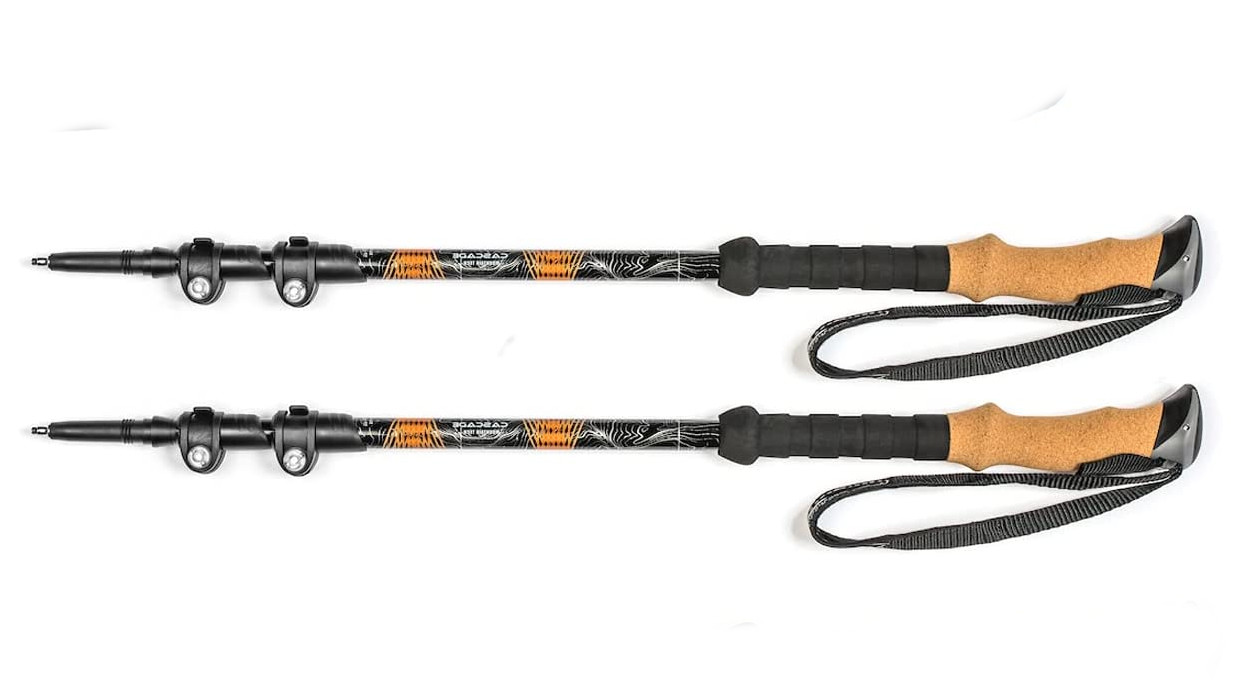
Specifications
Reasons to buy
Reasons to avoid
Arguably the best trekking poles you can buy for the price, Cascade Mountain Tech Aluminum Quick Lock Poles have a wide range of adjustability so that you can climb and descend even the steepest slopes, and always have poles that are the right length. The three-section poles are made from durable aircraft grade aluminum. The sections lock to length with clips that flip open and click shut.
On test, we found that the Cork grips are easy to hold onto, and they won’t get slippery on humid days or when your hands sweat. The poles have tungsten carbide tips for aggressive, no-slip grip on every imaginable trail surface. But they also come with four sets of tip covers – rubber boot tips, mud baskets, snow baskets and small rubber tips – for four seasons of use. They’re light for aluminum poles at 10.4oz without the rubber tips. And they come in a carry case. The poles have a one-year warranty, and because Cascade Mountain Tech wants to make sure you get many years of use from your poles, each section is replaceable in case it’s damaged or in case it wears out.
Read our full Cascade Mountain Tech Aluminum Quick Lock Trekking Poles Cork Grip review
The best for women
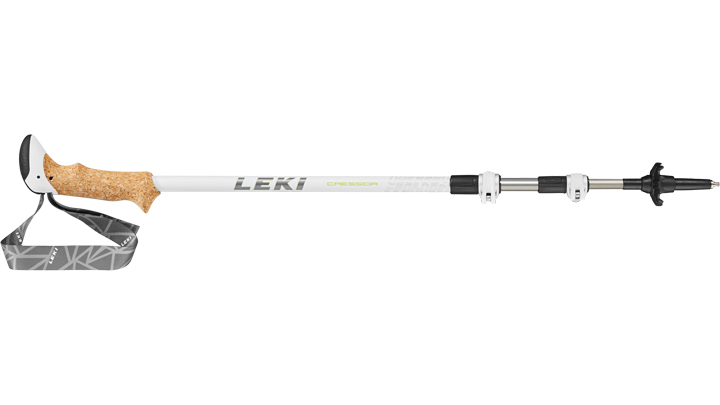
7. Leki Cressida
Our expert review:
Specifications
Reasons to buy
Reasons to avoid
The standout feature on the Cressida pole is the Aergon compact grips, made from 80% cork for its thermal and comfort qualities, and 20% latex for strength. These are expertly ergonomically designed and sized specifically for smaller hands, because the Cressida is manufactured with female hikers and trekkers primarily in mind (also makes a good pole for younger hikers).
The three-piece telescopic shaft is constructed from high-strength aluminum, which makes them reliably robust (Leki’s aluminum shafts are guaranteed for life against breakage) and super stable. The poles are fully adjustable, with Leki’s highly reliable and easy to use Speed Lock 2 clamp system. The ‘Skin’ strap is light and breathable, and the replaceable short carbide flex tip offers precision pole placement and has inbuilt flex. The Cressida comes with trekking baskets.
The best value
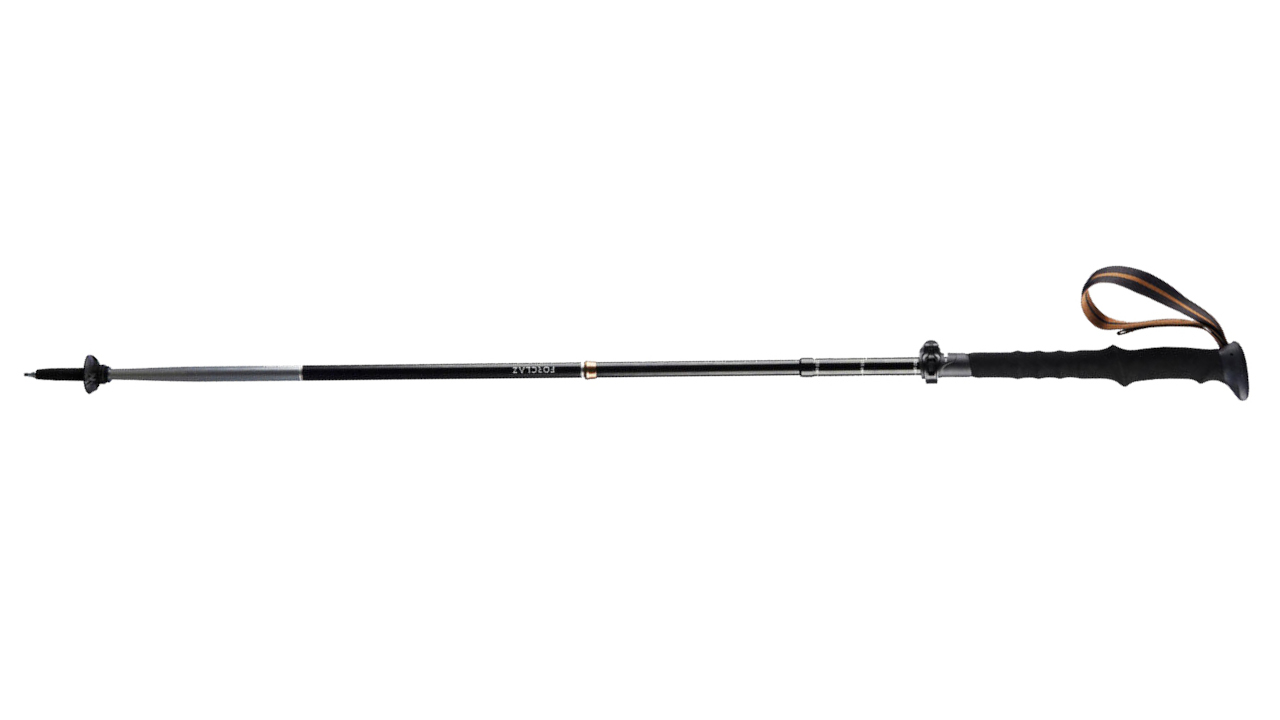
8. Decathlon Forclaz M-trekking 500 Ultra Compact
Our expert review:
Specifications
Reasons to buy
Reasons to avoid
Made with aluminum and weighing in at 275g per pole, we found that these Decathlon Forclaz sticks are not the lightest hiking poles out there, but they have a whole lot of smart technical design features and, given that they’re half the price of some other models, they are exceptionally capable on the trails.
First up, the five-piece structure assembles and collapses in a clever way: you push the top section down, which connects the lower pieces together (with pop-out buttons keeping them firmly in place) and then adjust the length of the overall pole, securing it with a latch on the top section.
They are, to be honest, a bit more fiddly to break down, but it’s a knack you quickly master, and the result is an impressively compact, three-section Z-shape, kept manageable with a supplied Velcro strap. The clip that holds the assembled and height-adjusted pole in place is plastic, which does make us wonder whether it will last as long as those with metal components, but the tubes themselves are relatively wide (20mm at the thickest point), which makes them really robust. Other features include a wide, comfortable wrist strap, a shaped foam handgrip with a good lower extension section for tackling off-camber and steep trails, and a tough tungsten tip. Overall we’re extremely impressed with what you get for your dollar with these poles. Note: they are sold individually (although you could – and arguably should – use two) and the price above is per pole, not pair.
The best for newbies
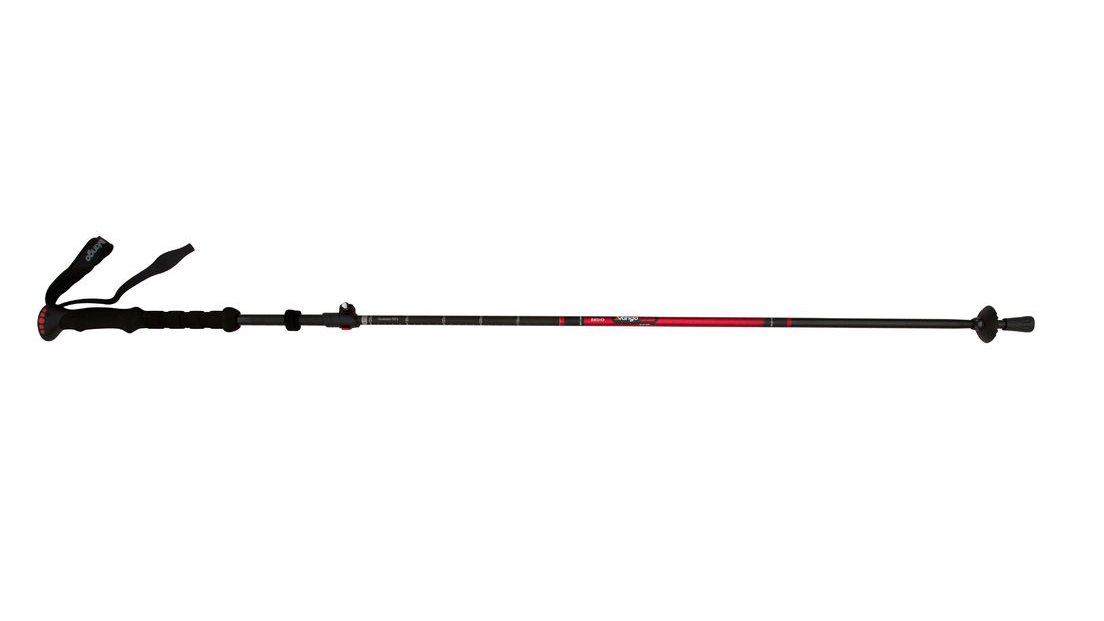
9. Vango Basho
Our expert review:
Specifications
Reasons to buy
Reasons to avoid
These brilliant budget trekking sticks are perfect for people perhaps trying poles out for the first time. The price tag is low, but the level of performance is actually very good. Made to a three-section folding design, they are constructed with Duralumin’ 7075 (fortified aluminum) they’re not as flexible, light or structurally strong as carbon poles, but they do seem robust enough for most hiking conditions (be careful on boulder fields and in deep snow, when breakage could occur).
On less technical trails they will reduce the stress and strain on knees and ankles, like all good poles do, but they’re also gentle on your wrists, because they come complete with in-built shock absorbers (which can be turned on or off with a twist of the grip), which is ideal on unforgiving surfaces such as concrete, duckboards and sun-baked trails. One downside is that the sections seem to detach quite easily if the dip digs in, however, they do come with trekking baskets. The wrist strap is easy to adjust and well padded, and we were particularly impressed with the handgrips, which are designed to let your hands breath. The lower grip area (an element often overlooked on more expensive poles, but crucial when you’re walking off camber or up steep slopes) is excellent too.
The best for warmer weather
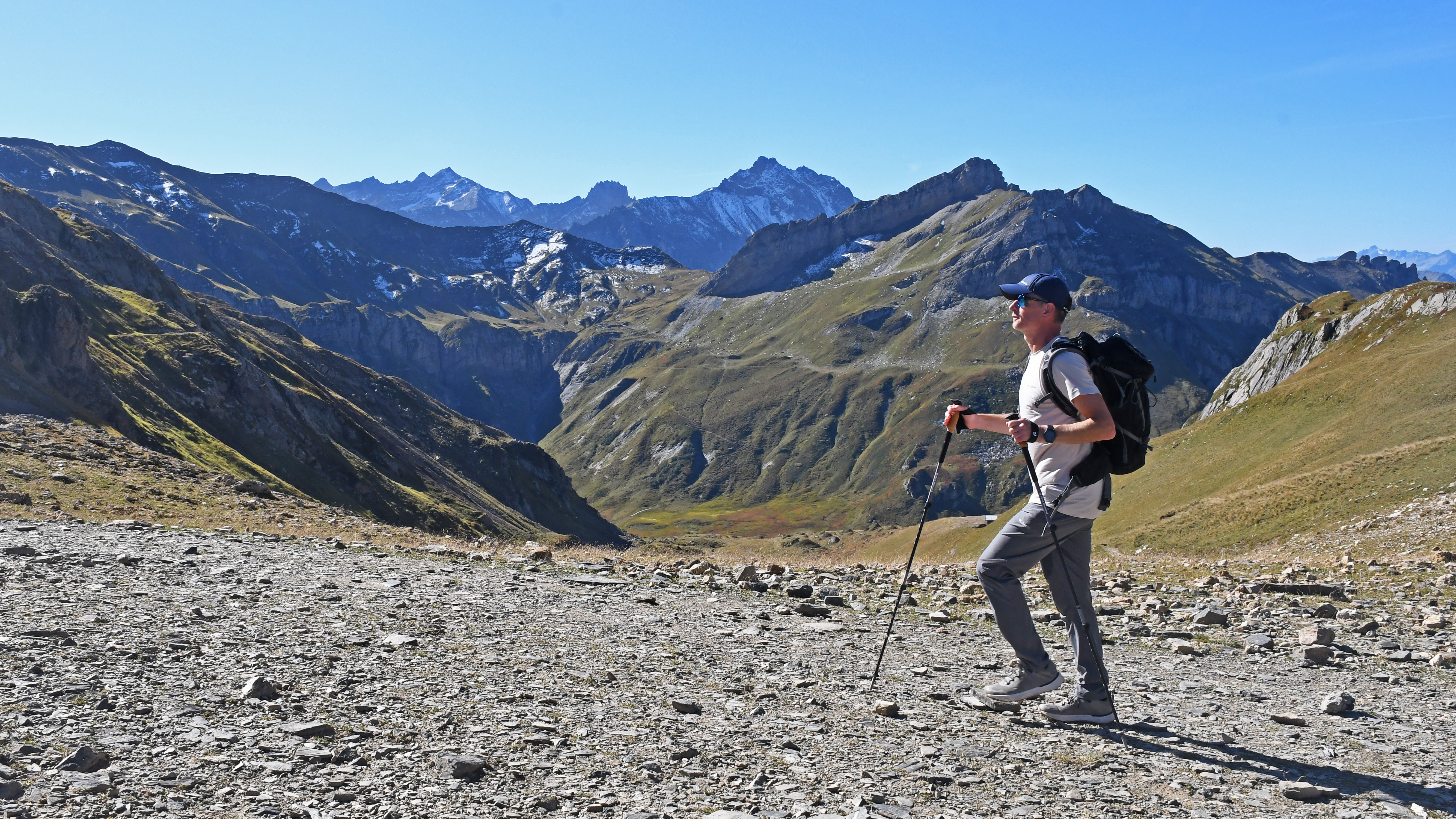
Specifications
Reasons to buy
Reasons to avoid
These versatile, three-piece telescopic trekking poles from Black Diamond are excellent for hiking across a range of environments and landscapes, in all kinds of conditions, however the cork grips mean they perform particularly well in warmer weather, because cork is far less sweaty than foam when held in bare hands.
The enhanced ergonomic comfort offered by the cork grips, which also absorb vibration brilliantly, is really noticeable in any conditions where you don’t require gloves, but especially when you’re working hard amid steeper hills and the temperatures are quite hot. The Fusion comfort straps on the handles are made with a moisture wicking material and have a flat lining for extra comfort. These straps offer excellent support, and they can easily be adjusted when you’re wearing thicker gloves – a good thing, because these telescopic sticks work well in winter too.
The BD Trail Cork is a true 4-season pole, and it comes with 100mm powder baskets included, for use in snow, as well as a low profile trekking baskets for walking on unsealed and potentially soft surfaces, paths and trails all year round. The technical tip is interchangeable as well: the poles come with carbide tips, which you can replace when they wear down, or swap out for rubber tips when required on certain surfaces.
Collapsible to a length of 62cm / 24.5in, these poles are extendable to between 100cm and 140cm / 39 inches and 55 inches. They’re secured in place with Black Diamond’s excellent FlickLock system, a lever-based, clamping mechanism that makes micro adjustments easy to make, even whilst you’re trekking. Below the main cork handles there’s an EVA extended grip area that allows you to use the pole while traversing off-camber terrain without having to shorten one of the sticks.
While not quite as light as carbon poles, the aluminium shafts are robust and hardwearing, and the BD Trail Cork poles should last you for many years, although cork does have a tendency to deteriorate over a long period of time.
Read our full Black Diamond Trail Cork review
Best trekking poles comparison table
Pole | RRP | Weight (per pair) | Packed length | Operational length |
Leki Cross Trail Lite Carbon | £159.99 (UK) / $199.95 (US) | 426g / 15oz | 65cm / 25.5in | 100–135cm / 39–53in |
Helinox Ridgeline | £160 (UK) / €149,95 (EU) | 408–476g / 14.4–16.8oz | 51.2–61cm / 20.2–24in | 120–135cm / 47–53in |
Black Diamond Trail Pro Shock | $140 (US)/£110 (UK) | 590g/1lb 5oz | 68cm / 27in | 105-140cm / 41-55in |
Cascade Mountain Tech Carbon Fiber Quick Lock Trekking Poles Cork Grip | $49.99 (UK) | 21oz / 600g | 66cm / 26in | 54in / 137cm |
Cascade Mountain Tech Aluminum Quick Lock Trekking Poles Cork Grip | $25 (US) / £40 (UK) | 680g / 24oz | N/A | 66–137cm / 26–54in |
MSR Carbon Ascent | $150 (US)/£130 (UK) | 470g/1lb (small), 500g/1lb1oz (large) | 36.2cm / 14.25in (small), 44.5cm / 17.5in (large) | 100-120cm / 39-47in (small), 120-140cm / 47-55in (large) |
Leki Cressida | $120 (US)/£105 (UK) | 440g/15.5oz | 64cm / 25in | 90-125cm / 35-49in |
Forclaz M-trekking 500 Ultra Compact | £35 (UK) | 552g / 19.5oz | 36cm / 14in | 110–130cm / 43½–51in |
Vango Basho | £29 (UK) | 223g / 4oz | 50cm / 20in | 115–135cm / 45–53in |
Black Diamond Cork Trail | $129.95 (US) / £110 (UK) / €120 (EU) | 486g / 1lb 1oz | 62cm / 24.5in | 100-140cm / 39-55in |
How we test trekking poles
Our reviewers test trekking poles on trails in a range of environments and conditions, from walking and running on technical hills and peaks to ambling along coastal paths and through woodlands, on day hikes and longer treks. Features (including construction materials, design, collapsed size, usable length, weight, strap, grip, tip quality, and overall usability) are tested against claims made by the brand, and we assess factors such as value for money, durability and functionality.
For more details, see how Advnture tests products.
Choosing the best trekking poles
Now that you’re convinced of their usefulness, there’s a surprisingly diverse range of trekking poles to choose from, all offering different qualities. Before you invest in poles, the most important thing is to think about when and where you’re most likely to be using them, and consider the following factors:
1. Size
Using the correct length pole is clearly crucial, and getting the height right involves the consideration of a few factors, including personal preference and the variability of the terrain you are traversing. On flat surfaces, the accepted wisdom is that the top of the straight placed pole should be at hand level when your arm is in front of you with your elbow bent at 90 degrees. However, when climbing steep slopes, it’s better to shorten the pole so you don’t overstretch, and the opposite is true for long descents: lengthen the pole to avoid bending too much.
Pack size – the minimum length the poles can be reduced to when not in use – is also a very important consideration, especially if you’re likely to be travelling to the trailhead. Even while on the trail, there are likely to be stretches when you’d prefer to put your poles away for a while, and the ability to stash them easily in a daypack – or even in a hydration pack if you're running – is important.
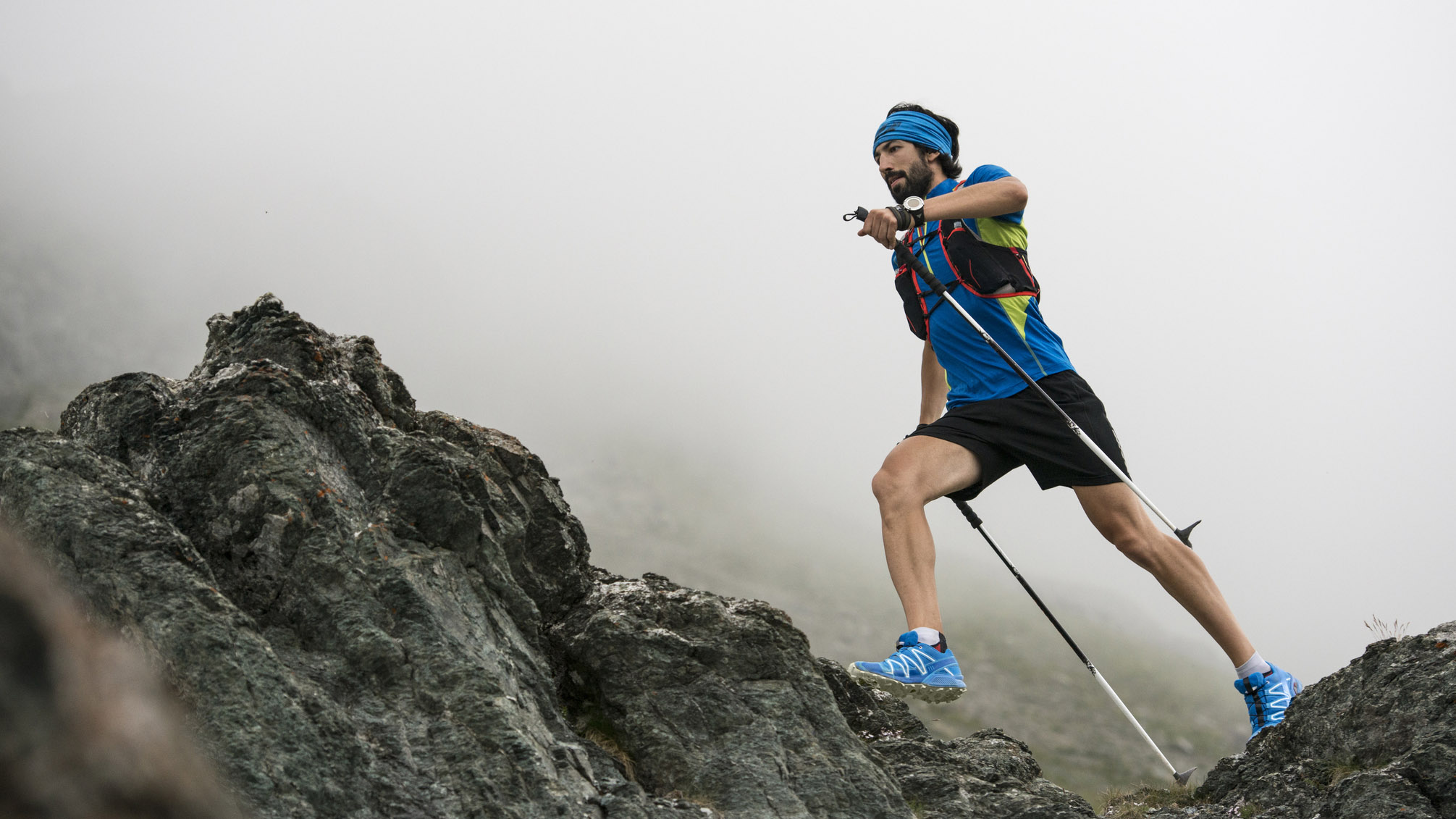
2. Design
Trekking poles can be rigid, telescopic or collapsible. If you’re only ever likely to use poles when walking out from your backdoor or a car park, basic rigid designs are fine. However, if you regularly take on technical terrain, an adjustable design is better, and this also means other people can use the equipment. Telescopic and collapsible poles are obviously much easier to carry around in backpacks.
The majority of the best trekking poles are three-section models. Look closely at the locking system used to secure poles once they’ve been adjusted. Also, the inclusion of a lower grip area is a very useful design feature, so you can alter hand placement without changing the length of the pole while ascending and side hilling. If you want to use your poles in a variety of conditions, including on snow and sealed surfaces, check which basket and tip options they come with. Note – if you’re intending to use them in all seasons, ensure the loop is big enough to get your hand through when wearing your best hiking gloves, and make sure it’s easily adjustable with a glove on.
3. Materials
There are three main factors to consider when looking at the material used in the best hiking poles: weight, price and durability. Carbon poles are obviously very light, but they’re also typically expensive compared to their aluminium cousins. There are budget options out there, however, and if you’re doing lots of long-distance hikes, then saving grams is important and the investment is well justified.
Carbon poles are strong, but can become brittle in certain conditions and when placed under stress at certain angles, and when they break it’s typically catastrophic and final. Aluminium poles are typically cheaper and more robust, and they can often be bent back into shape after a mishap. With the grip, often there’s a choice between foam (more durable, but water absorbing) or cork (more comfortable and waterproof, but prone to chipping).
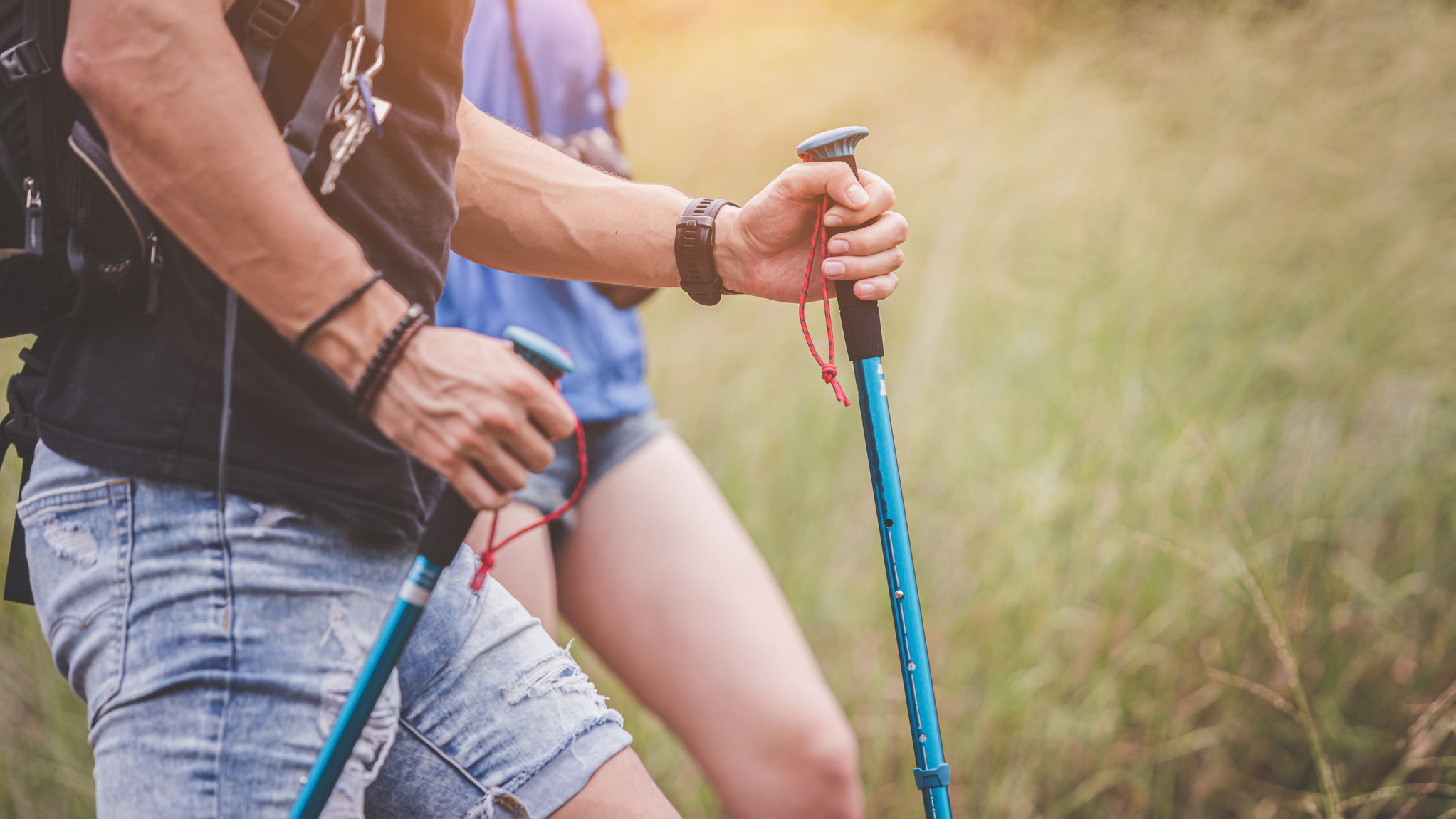
4. Comfort
Try before you buy – not just to ensure you can get the right sized pole, but also to check that the grip and hand loop is comfortable. Pay particularly close attention to the ergonomic feel and material used in the grip. If you're buying poles to use while trail running, do you wear running gloves? If so, make sure you've got them on when you try your potential new poles for the first time.
5. Cost
The best hiking poles are an excellent addition to every explorer’s trail-kit bag, and the more you use them the more you will appreciate them. We'd go as far to say that they are a hiking essential. There are very cheap home-brand pole options out there, but you will get what you pay for. For durability, it’s worth making an investment.
- Best hiking shoes: lightweight footwear for tough trails
All the latest inspiration, tips and guides to help you plan your next Advnture!
Vermont-based writer, photographer and adventurer, Berne reports on hiking, biking, skiing, overlanding, travel, climbing and kayaking for category-leading publications in the U.S., Europe and beyond. In the field, she’s been asked to deliver a herd of llamas to a Bolivian mountaintop corral, had first fat-biking descents in Alaska, helped establish East Greenland’s first sport climbing and biked the length of Jordan. She’s worked to help brands clean up their materials and manufacturing, and has had guns pulled on her in at least three continents.
